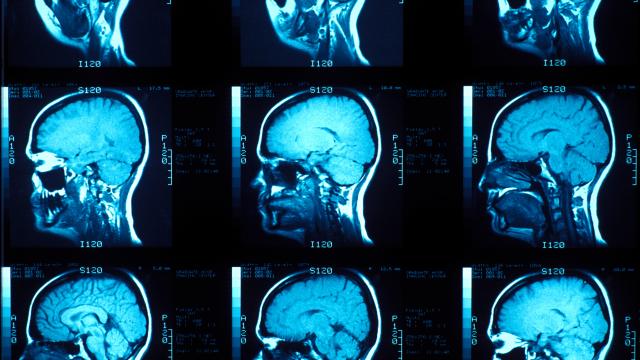Most of the time, it’s easy to tell when someone is consciously aware. But there are many tragic cases when it’s unclear whether a person who is unresponsive after a serious brain injury is truly no longer conscious. That ambiguity can raise ethical questions about how to manage or ultimately end such a person’s life-sustaining care.
A new study out Wednesday doesn’t provide any clear answers to those questions, but its findings might someday help us objectively track consciousness in unresponsive people, through their patterns of brain activity. It might even offer a lead on better treatments that can bring some of these people back from the brink of unconsciousness.
The study, published in Science Advances, was a collaboration between researchers from France, Belgium, the UK, the U.S., and Canada. Collectively, they recorded the brain activity (via functional MRI) of 159 people at four different medical centres. All of the subjects fit the bill for what we’d consider being unconscious, but not all in the same way.
There were 47 healthy volunteers who had their brains scanned when awake and after being temporarily sedated with general anesthesia. The remaining 112 subjects had all suffered serious brain injury, and were further divided into two groups. Some were thought to be in a minimally conscious state, meaning they were capable of showing some possible flickers of awareness. Others were diagnosed with unresponsive wakefulness syndrome, a condition where people can be awake, but without showing signs of voluntary movement (this is commonly referred to as a vegetative state).
Interestingly, some of these unresponsive people (in the UK) had tested positively on a mental imaging task, where their brain showed activity while they were told to simply imagine doing something, like moving their hand.
The researchers then compared the scans of each group. Based on the fMRI results, they found four distinct patterns of neural activity thought to be related to cognition in the patients’ brains. The patterns were distinguished by their levels of complex, far-reaching connections made between neurons in 42 different brain regions, along a spectrum from most to least complex and connected.
The highly complex pattern 1, they found, was most likely to show up in completely awake healthy volunteers, while the least complex pattern, pattern 4, was most common in completely unresponsive patients (patterns 2 and 3 showed up at the same frequency in all groups). But people in a minimally conscious state also showed pattern 1 more often than people in a vegetative state.
People who were vegetative but did respond to the mental imaging test also occasionally showed the complex pattern 1, suggesting they could have had fleeting moments of consciousness. But there was virtually no sign of the pattern in vegetative patients who hadn’t responded to the mental imaging test, nor in the healthy volunteers who were sedated.
All of these subtle distinctions, the authors said, could mean there are ways to tell apart the mostly unaware from the fully unaware.
“Importantly, this complex pattern disappeared when patients were under deep anesthesia, confirming that our methods were indeed sensitive to the patients’ level of consciousness and not their general brain damage or external responsiveness,” study author Davinia Fernández-Espejo, a neuroscientist at the University of Biringham in the UK, said in an article for The Conversation explaining the team’s work.
Fernández-Espejo and her team’s research should be seen as one of the first steps in many needed to identify markers of consciousness in the brain. Such a discovery would be obviously be great in helping doctors and families of vegetative patients better understand their situation. But it could have even greater implications.
“In the future it might be possible to develop ways to externally modulate these conscious signatures and restore some degree of awareness or responsiveness in patients who have lost them, for example by using non-invasive brain stimulation techniques such as transcranial electrical stimulation,” said Fernández-Espejo. According to Fernández-Espejo, that line of research is something her team is already starting to work on.
Aside from these unfortunate patients, she added, this same kind of research could be extended to learn more about the brain states of people taking psychedelics and those who say they can lucid dream.
